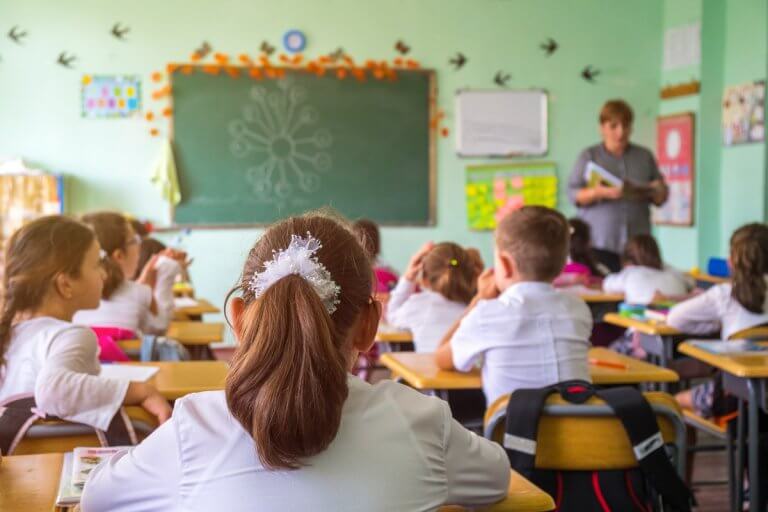
Twenty years ago, parents had the option of sending their kids to either a public (or government) school, private school, or international school.
Today, it’s not as cut-and-dry, as different types of school are regularly cropping up, from magnet schools to charter schools, and even home schooling.
Parents today are increasingly looking at alternative forms of education and school systems for their children.
In the US and Australia, charter schools have been on the rise, and it’s slowly becoming a trend in the UK too, where they call them ‘charter-type academies’.
According to a report by the National Alliance for Public Charter Schools, enrollment in charter schools across the US over the past 10 years has nearly tripled from 1.2 million students in 2006-07, to an estimated 3.1 million in 2016-17.
It said, “The estimated 7 percent growth in charter school enrollment between fall 2015 and fall 2016 demonstrates continued parental demand for high-quality educational options.”
But what really is a charter school and how are they different from a private school?
Charter schools
Charter schools are public schools that receive funding from the government, but operate independently. They are usually founded by parents, teachers or community organisations.
They are normally called ‘public school of choice’, as parents can choose to send their child there as opposed to normal public schools, whereby children are usually designated to a particular neighbourhood.
Students are selected based on a random public lottery, but priority is given to those who reside in the same state as the school. Parents from other states can still register their child if space permits.
The word ‘charter’ refers to a performance contract which details the school’s mission, programme, students served, performance goals and methods of assessment.
These kinds of schools are usually set up to challenge the standard government education system, and sometimes specialise in a particular area of study such as ‘the arts’ or ‘technology’, or are catered specifically for gifted kids.

Fourth-graders at Meadows Arts and Technology Elementary School taking part in a music class. Source: SCPR.org
While they do not charge tuition fees, they often use other forms of funding such as sponsorship or donations.
Charter schools must adhere to the basic requirements of the state, but are free from most regulations and scrutiny of government authorities.
However, they are accountable for academic results, and must keep the promises made in their charter. They must be able to demonstrate student performance in areas like academic achievement, financial management and organizational stability, or they may be closed.
Mark Berends, Director of the Center for Research on Educational Opportunity at Notre Dame, recently described private schools as “public schools that are privately managed.”
He said, “The idea of charter schools is that they’re supposed to be given kind of some freedom from some of the regulations that traditional public schools have so that they can be innovative and different, and think about different ways to educate kids.”
Charter schools are accountable for academic results and for upholding the promises made in their charters. They must demonstrate performance in the areas of academic achievement, financial management, and organizational stability.
There is an estimated 6,900 public charter schools in the nation, as of 2016-2017.
Another relatively new type of school is the ‘magnet school’, which has some similarities with charter schools.
They are free public schools which are highly competitive and selective, renowned for special programmes catering to students who excel academically.
They must adhere to state requirements and are run by the same administration as public schools and are not-for-profit, which makes them different from charter schools.
Private schools
Private schools differ from charter schools due to the fact they rely on tuition payments and private funds such as grants and donations, and do not receive any funding from the government.
There are around 34,576 private schools in the US, according to Capenet, which tabulated statistics for the 2015-2016 school year.
Approximately 10 percent of children in the US are enrolled in K12 private schools, and the cost to attend ranges from US$4,000 a year to US$25,000 or more. Some offer boarding facilities, which could hike the fees up to as high as US$40,000.

Phillips Academy in Andover, which was named ‘Best Private School in America’ in 2017 by Niche. Source: Wikipedia
Students at private schools are typically selected based on a pool of students who apply for admission, and acceptance could be based on entrance exams and/or community standing.
Another form of private institutions are independent schools, which are nonprofit schools governed by boards of trustees, drawing on funds from tuition payments, charitable contributions and endowments.
Although they can be affiliated with religious institutions, they cannot receive funds or governance from them.
Unlike public or charter schools, private schools are not required to observe some state and federal requirements such as the Americans with Disabilities Act.







